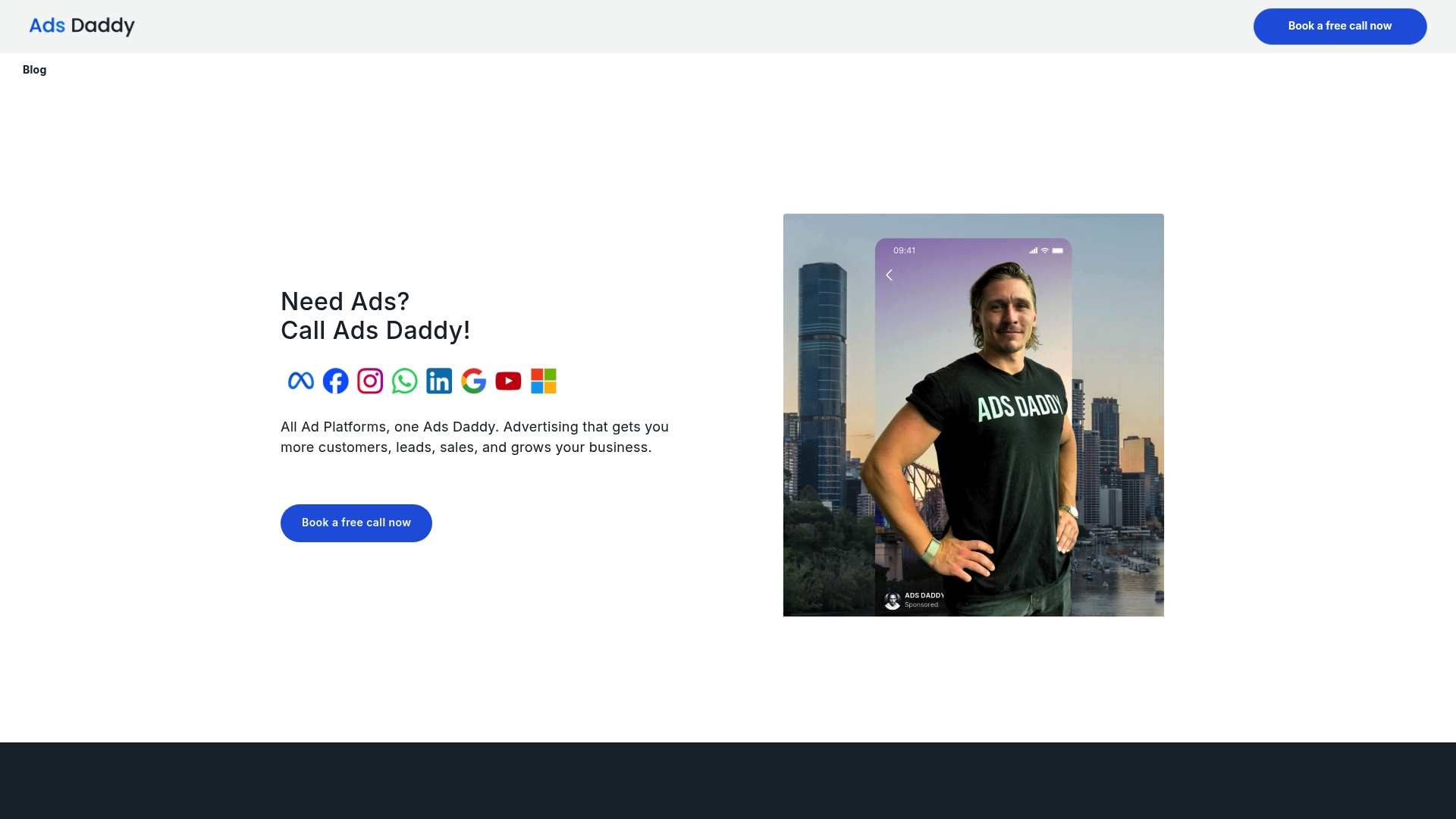Did you know that businesses waste up to 40% of their digital ad budget due to unclear goals and poor targeting? Every lost dollar stings when you are counting on your ads to deliver real results. The difference between campaigns that succeed and those that flop often comes down to clear objectives, smart targeting, and compelling creative. Get ahead by making sure your display ads work smarter and reach the audience who truly matters.
Table of Contents
- 1. Set Clear Goals For Your Display Ad Campaigns
- 2. Choose The Right Target Audience
- 3. Use Eye-Catching And Relevant Visuals
- 4. Craft Short And Compelling Ad Copy
- 5. Optimise Landing Pages For Conversions
- 6. Test And Refine Your Ad Variations Regularly
- 7. Monitor Performance And Adjust Your Budget
Quick Summary
| Takeaway | Explanation |
|---|---|
| 1. Set Clear Goals | Define specific objectives following the SMART criteria to guide your advertising decisions. |
| 2. Choose the Right Audience | Target audiences based on demographics and interests to maximize ad relevance and effectiveness. |
| 3. Use Eye-Catching Visuals | Ensure high-quality images dominate the ad design to attract attention and communicate your offer. |
| 4. Craft Compelling Ad Copy | Write concise copy focusing on core benefits to quickly engage and prompt action from viewers. |
| 5. Test and Refine Ads | Regularly test ad variations to understand audience preferences and improve engagement and conversions. |
1. Set Clear Goals for Your Display Ad Campaigns
Ever thrown money at advertising without knowing exactly what you want to achieve? Stop right there. Successful display advertising starts with crystal clear goals that guide every single decision you make.
Think of your display ad campaign like planning a road trip. You would not jump in a car without knowing your destination. Same goes for digital advertising. Your goals might range from brand awareness to driving website traffic to generating actual sales leads.
According to research from the guide on ad campaign management, defining precise objectives is mission critical. Without specific targets, you are basically shooting arrows in the dark.
Key Goal Categories to Consider:
- Increasing brand visibility
- Generating website traffic
- Collecting potential customer contact details
- Driving direct product sales
- Promoting specific marketing events
When setting goals, make them SMART: Specific, Measurable, Achievable, Relevant, and Time-bound. Instead of saying “I want more customers,” say “I want to increase online sales by 20% in the next three months through targeted display advertising”.
Australian Consumer Law emphasises transparency in advertising. This means your goals should not just be numeric but also align with honest, substantiated marketing practices. Your display ads must clearly communicate what you are offering and deliver on those promises.
Pro tip? Break down your overarching goal into smaller, trackable milestones. This helps you adjust strategies quickly and keeps your campaign laser focused on delivering real business results.
2. Choose the Right Target Audience
Picking the right audience is like finding your perfect dance partner. One wrong move and you are stepping on toes instead of creating marketing magic.
Targeting is not about reaching everyone. It is about reaching the right someone. According to research on ad targeting strategies, effective digital display advertising hinges on precise audience segmentation.
Australian businesses need to understand that your target audience is not just a demographic. It is a living breathing group with specific interests, behaviours, and expectations.
Targeting Dimensions to Consider:
- Demographic details (age, gender, income)
- Geographic location
- Professional background
- Online behaviour patterns
- Specific interests and preferences
Your ad creatives should mirror your audience’s world. A corporate professional might scroll past flashy graphics, but will pause for a clean minimalist design. A younger mobile user? They want bold visuals that pop and tell a story in seconds.
Practical tip: Create audience personas. Give them names. Understand their challenges. What keeps them up at night? What solutions are they seeking? The more specific you get, the more precise your targeting becomes.
Remember. Broad targeting is like shouting into a crowded room. Precise targeting is like having a focused conversation with someone who actually wants to hear what you are saying.
3. Use Eye-Catching and Relevant Visuals
In the split second someone scrolls past your ad, your visual needs to scream “Look at me!” Without a killer image, your display ad might as well be invisible.
Visuals are the superheroes of digital advertising. They do the heavy lifting of grabbing attention and communicating your message faster than any text ever could. According to professional design insights, your images should have a clear focal point that immediately draws the viewer in.
Think of your ad visual like a first date. You want to look your best, be interesting, but not try too hard. Your image should be professionally designed, crisp, and directly relevant to your offer.
Visual Design Principles for Display Ads:
- Use high quality professional images
- Ensure product is front and centre
- Maintain clean and uncluttered design
- Use minimal background space
- Choose colours that pop
Remember the 80% rule from ad targeting strategies: your product or service should occupy at least 80% of the visual real estate. Blank space is not your friend here.
Pro tip? Test multiple visuals. What looks amazing to you might not resonate with your target audience. Run small experiments. Track which images generate more clicks. Design is part art and part science.
Your visual is your first impression. Make it count. Make it memorable. Make it so good that people cannot help but stop and look.
4. Craft Short and Compelling Ad Copy
Imagine trying to tell your entire life story in a tweet. Tough right? Welcome to the world of display ad copywriting.
Your ad copy is like a sales pitch in a matchbox. Every. Single. Word. Counts. According to professional marketing insights from ad optimization strategies, your headline needs to capture the primary benefit faster than a kangaroo can jump.
Copywriting is not about being clever. It is about being clear. Most businesses make the fatal mistake of trying to sound smart instead of solving a customer problem.
Copywriting Essentials:
- Focus on one core benefit
- Use simple language
- Create urgency
- Speak directly to your audience
- Avoid industry jargon
Pro tip? Write your first draft. Then cut it by half. Then cut it again. The most powerful messages are often the simplest.
Remember. You are not writing an essay. You are creating a lightning fast emotional trigger that makes someone want to click. Your copy should whisper directly into the reader’s deepest desires.
Avoid clickbait like the plague. Be honest. Be direct. Be the ad people actually want to read. Your audience will thank you by converting.
5. Optimise Landing Pages for Conversions
You have just spent precious marketing dollars getting someone to click your ad. Now do not blow it with a terrible landing page.
Your landing page is like a first date. You want to look good. Be clear. And make a compelling case for why someone should stick around. According to insights from lead generation strategies, the wrong landing page can tank your conversion rates faster than a lead balloon.
A great landing page is a conversion machine. It does three critical things: grab attention, build trust, and make taking action ridiculously easy.
Landing Page Must Haves:
- Lightning fast loading speed
- Mobile responsive design
- Clear and compelling headline
- Simple and intuitive navigation
- Minimal form fields
- Consistent brand visuals
Think of your landing page as a precision tool. Every single element should be purposeful. Your brand colors. Your fonts. Your imagery. They should all whisper the same compelling story.
Pro tip? Test everything. A button color change can increase conversions by surprising percentages. Your landing page is not a set and forget situation. It is a living breathing conversion engine that needs constant tweaking.
Remember. People have the attention span of a caffeinated squirrel. Make your point fast. Make it clear. And make clicking that button feel like the most natural thing in the world.
6. Test and Refine Your Ad Variations Regularly
Think of your display ads like a scientific experiment. No brilliant scientist runs one test and declares victory.
According to professional advertising trends and strategies, top marketers recommend creating 4 to 5 ad variations per campaign. Why? Because your audience is not a monolith. They are complex humans with different triggers and preferences.
Constant testing is the secret weapon of successful advertisers. Your first ad is rarely your best ad. It is just your starting point.
Ad Testing Strategies:
- Create multiple visual variations
- Experiment with different headlines
- Try varied call to action phrases
- Use HTML5 and rich media formats
- Track performance metrics meticulously
Rich media and animated content can dramatically increase engagement. An HTML5 ad with subtle movement might catch someone’s eye where a static image would be ignored.
Pro tip? Do not just test randomly. Have a hypothesis. Maybe you think a more casual headline will work better. Or perhaps a brighter color scheme will improve click through rates. Form a clear prediction before you start.
Remember. Data does not lie. Your feelings about an ad do not matter. What matters is what your actual audience responds to. Keep testing. Keep learning. Keep improving.
7. Monitor Performance and Adjust Your Budget
Your ad budget is not a set and forget game. It is a living breathing organism that needs constant attention and care.
According to ad optimization strategies, tracking your campaign performance is not just recommended. It is mission critical. Think of your ad budget like a plant. Feed what grows. Prune what does not.
Performance tracking is your financial GPS. Without it. You are burning money blindly.
Key Performance Metrics to Watch:
- Click through rate
- Conversion rate
- Cost per acquisition
- Return on ad spend
- Audience engagement levels
The goal is not just to track. It is to understand. Why did this ad work? What made that audience segment respond? Exclude site categories and placements that consistently underperform. They are budget vampires sucking your marketing dollars.
Pro tip? Set a regular rhythm for reviewing your metrics. Weekly is good. Monthly is the absolute minimum. Some top performers check their ad performance daily. Be ruthless about cutting ineffective channels and doubling down on what works.
Remember. Your ad budget is an investment. Not an expense. Treat it with the strategic attention it deserves. Smart marketers do not spend money on ads. They invest in precise audience connections.
This table summarises key strategies and steps for running successful display ad campaigns as outlined in the article.
| Step or Strategy | Key Points & Actions | Benefits/Outcomes |
|---|---|---|
| Set Clear Goals | Define SMART objectives: Specific, Measurable, Achievable, Relevant, Time-bound. Break into smaller milestones. | Guides decisions, enhances focus, ensures transparency. |
| Choose Right Target Audience | Use precise segmentation based on demographics, location, behaviour. Create detailed audience personas. | Increased relevance, higher engagement, effective reach. |
| Use Eye-Catching Visuals | Implement design principles with high-quality images, clear focal points. Test visual variations. | Captures attention, communicates messages quickly. |
| Craft Compelling Ad Copy | Focus on core benefits, simple language, urgency. Reduce copy length for clarity. | Engages audience, prompts action, avoids misunderstanding. |
| Optimise Landing Pages | Ensure fast loading, mobile responsiveness, simple navigation. Test elements regularly. | Enhances user experience, improves conversion rates. |
| Test and Refine Ad Variations | Create multiple variations, test headlines and CTAs. Use data-driven decisions. | Discover effective strategies, continuous improvement. |
| Monitor Performance and Adjust Budget | Track CTR, CPA, ROAS. Adjust spending based on performance metrics. | Increases ROI, optimises ad spend, strategic resource allocation. |
Unlock the Full Potential of Your Display Ads with AdsDaddy
Struggling to turn your display ad efforts into measurable business results? This article highlights the critical challenges of setting clear goals, targeting the right audiences, and optimising landing pages for maximum conversions. If you want to escape the frustration of wasted ad spend and inconsistent performance, AdsDaddy offers precisely the expertise you need.
We specialise in crafting and managing display campaigns across top platforms like Facebook, Google, and LinkedIn using data-driven strategies that focus on clear goals, precise targeting, and compelling visuals. Our team also ensures your landing pages are conversion machines that turn clicks into loyal customers.

Take control of your advertising journey today. Visit AdsDaddy to discover how our expert campaign management and optimisation services can make your next display ad campaign a success. Don’t wait—start turning your ad budget into real business growth now with proven strategies and personalised support from AdsDaddy.
Frequently Asked Questions
What are the key goals for a successful display ad campaign?
Successful display ad campaigns should have clear goals, such as increasing brand visibility, driving website traffic, or generating sales leads. Begin by defining your primary objective using the SMART framework—make it Specific, Measurable, Achievable, Relevant, and Time-bound to guide your campaign effectively.
How do I choose the right target audience for my display ads?
To choose the right target audience, segment your potential customers based on demographics, geographic location, online behavior, and interests. Create precise audience personas to understand their challenges and needs, which will help tailor your messaging and visuals to resonate better with them.
What type of visuals work best for display ads?
Eye-catching visuals that are directly relevant to your offer are essential for effective display ads. Use high-quality images that maintain a clean and uncluttered design, ensuring that your product occupies around 80% of the visual space to grab attention instantly.
How can I write compelling ad copy for my display ads?
To write compelling ad copy, focus on one clear core benefit and use simple language to create a sense of urgency. Avoid jargon and aim for concise, emotional messages that resonate with your audience, then tighten your copy by cutting unnecessary words to enhance clarity.
What should I test on my display ads to improve performance?
You should test various ad elements like visual designs, headlines, and call-to-action phrases to identify what resonates most with your audience. Create 4 to 5 ad variations per campaign and track performance metrics to make informed adjustments and improve overall effectiveness.
How often should I monitor my display ad performance and adjust my budget?
Monitor your display ad performance weekly to ensure you’re keeping track of key metrics like click-through rates and conversion rates. Be proactive in adjusting your budget based on performance—redirect funds towards higher-performing ads and remove budget from underperforming channels to optimize your investment.



